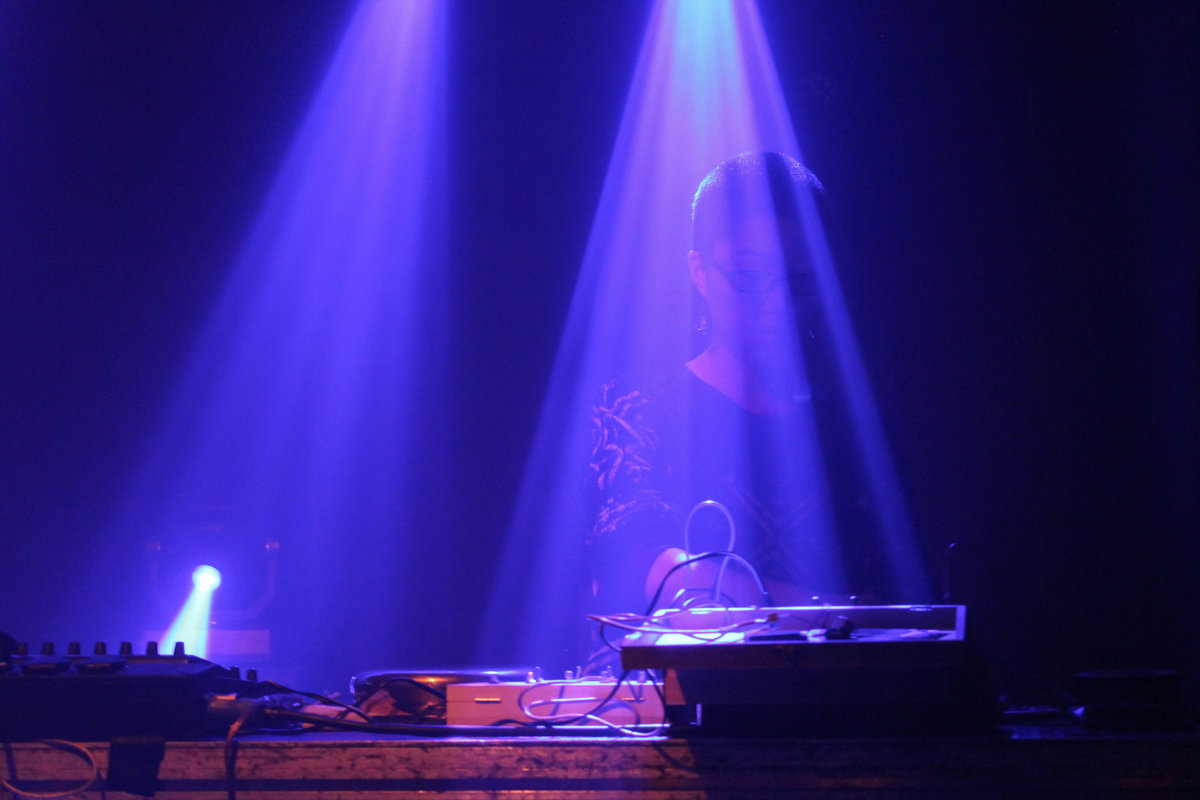Somehow, I think that the direction toward my solo live electronics set has been built up for last few months. Considering my previous experiences with the electro-acoustic music for conventional instruments, I believe the world that those acoustic instruments and their tradition have brought, the values on themselves, the fact that they ‘still’ shine as they are, with enormous amount of possibilities that they can do, different from the digital sound, the power of acoustics. Again, they are different, and I don’t prefer one among the other. My point is that I’d like to use them both, in my own way.
Those analog synthesisers are the same for me. I simply would like to use them all because they are amazing as they are. So I am currently developing the way to combine those three worlds: analog, digital sounds and acoustic sound together, and I believe that this is not my first attempt, but the one that I was more aware of what I’d like to do with all the instruments.
So here it comes: Time-Folding V.3.4 for Gong, Benjolin, 16step sequencer, 555 timer, 4096 NAND atari junk, and laptop with Supercollider.
The main instrument here is the Gong, ‘Kweng-ga-ri,’ one of the most representative metal instruments in Korea, vividly in use with other percussions, and it creates very un-defined loud noise, as well as a soft resonance. Normally the instrument is played by a person holding vertically with one hand, and use a mallet to hit the surface with the other hand. The hand that is holding the gong is controlling the resonance too using fingers.
I wanted it to have all those qualities, but by playing in a completely different way. What I did is to use a loudspeaker underneath the gong and give a overloaded impulse to the speaker so that the speaker can hit the gong. I use an object to bounce inside too. It is much easier. Since I am using a speaker, I use the feedback too to create some sort of melodic(?) noise, which I love in this system.
Since this instrument carries mostly the rhythmic part, all the rest do some other jobs: like more linear motion, adding some weight into the musical drama. But mostly I wanted the Gong to be the main actor of the drama, and all the others can support this role. Nothing is less important.
One can probably say that I use too much equipments. That might be true so that I can’t carry them all by myself anymore. -I am too small for such music.- However those are very clearly categorised: The gong with speaker+mics for the sound input, The analogue devices are having its own network, and The laptop with Supercollider, controlled by midi controllers, are the effectors: again, acoustic+analog+digital respectively. Those three are very much bound together, especially by the system of Supercollider. The effector sometimes differentiate what to treat -either from the Gong or from the synthesisers. But often the effectors apply to both and create feedback too. Then they are equality treated at the same time. But still it is an ongoing project, and I am enjoying finding a number of possibilities from all of those.
Well, I hope you enjoy watching the video. I’ll see how many version of this Time-folding series will last. I hope it goes further.
Liveset @ HetNutshuis, Test Extra:Tele-li(f/v)e 31/Jan/2014 from Ji Youn Kang on Vimeo.
KANG, solo Live Electronics @ Noodlebar, Rotterdam from Ji Youn Kang on Vimeo.

